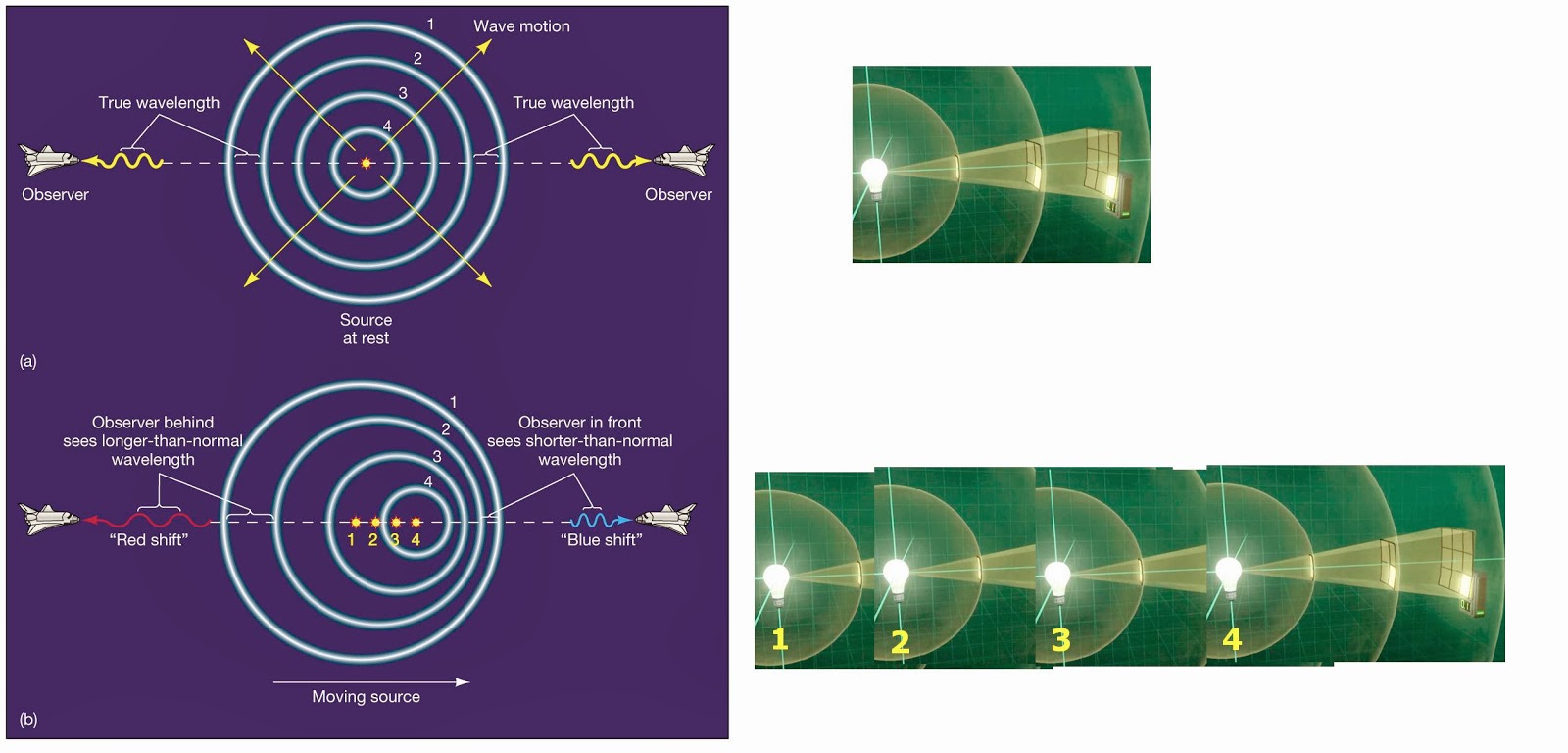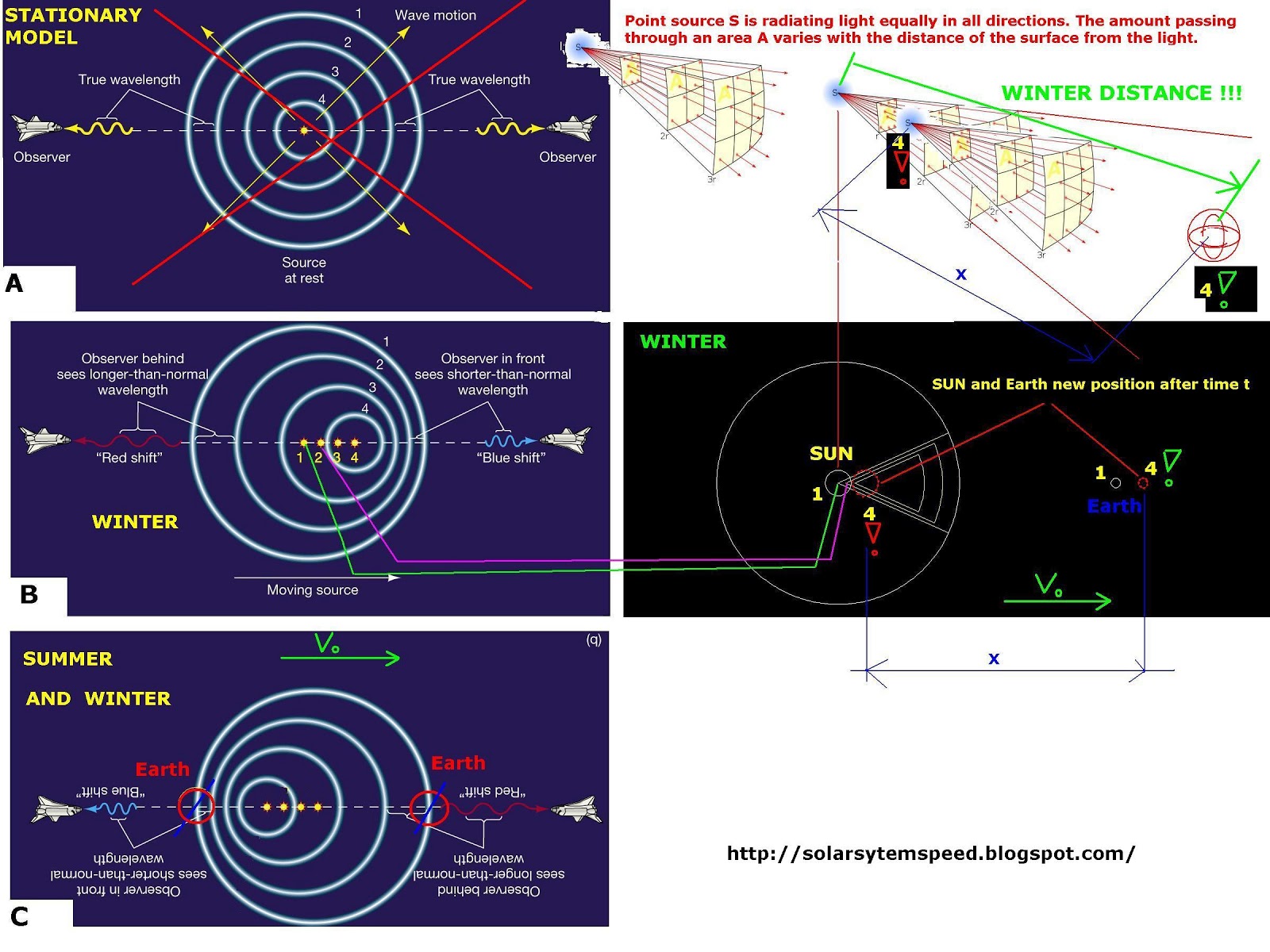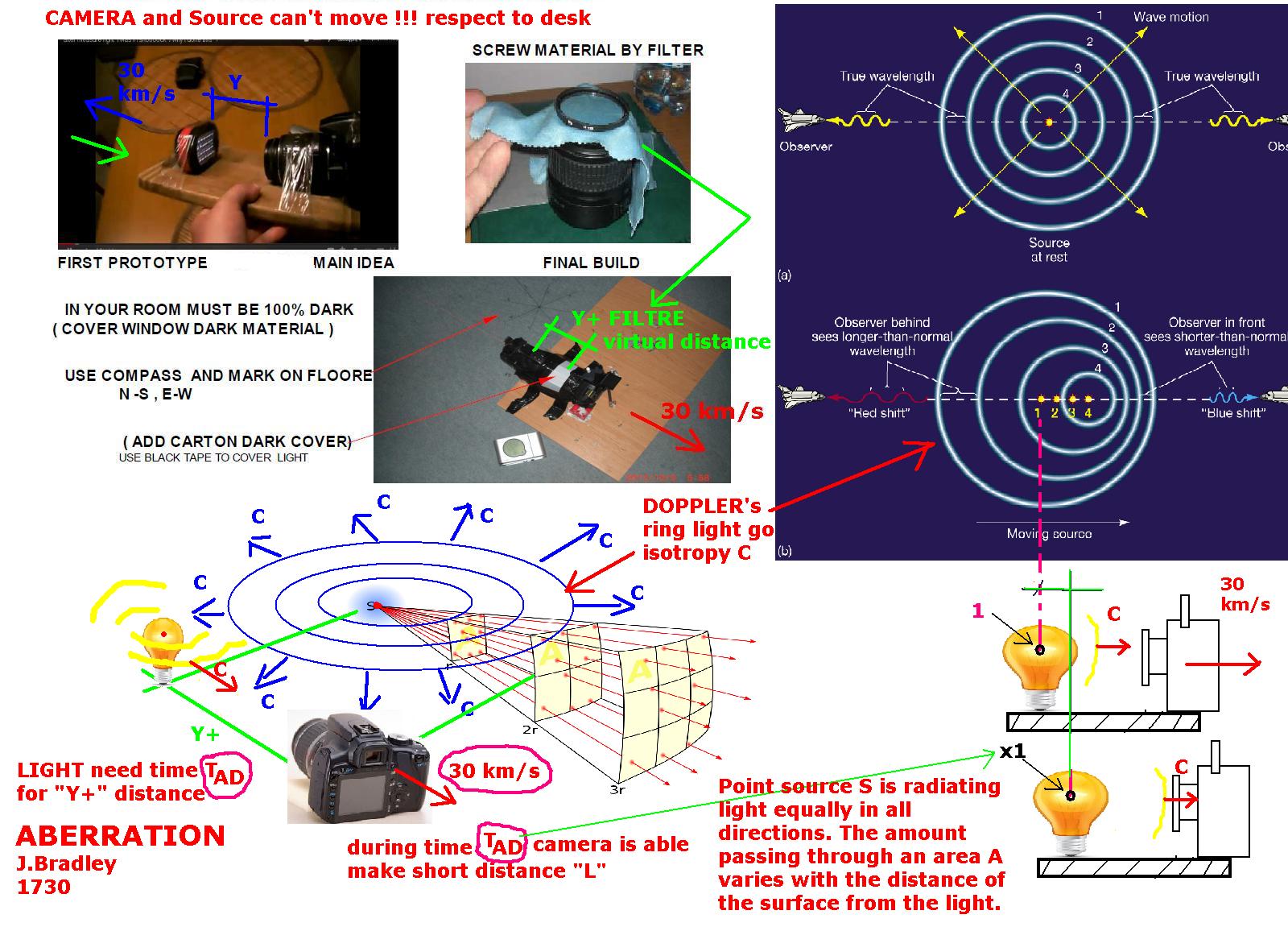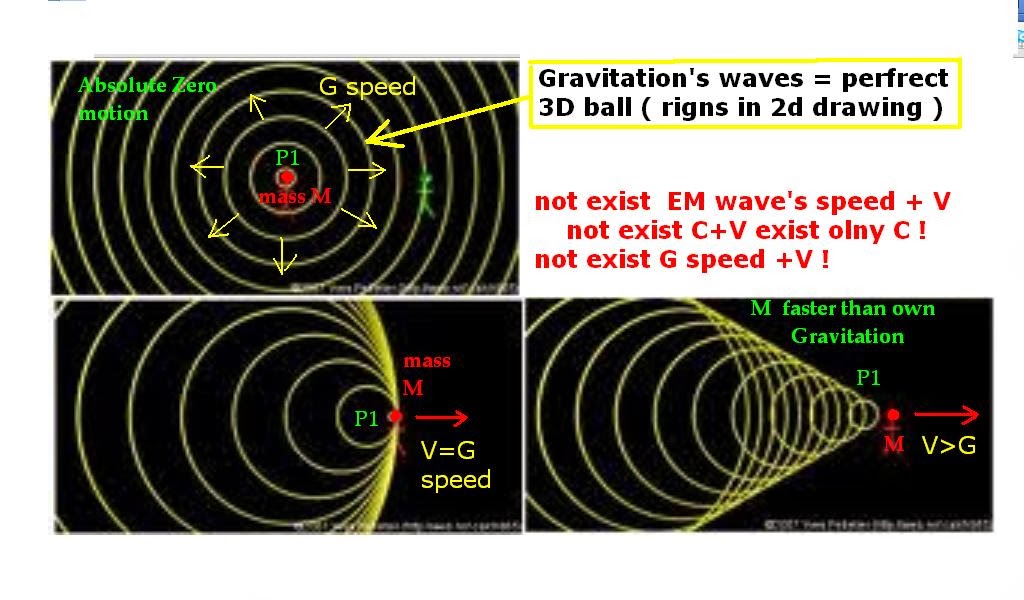|
0 members (),
381
guests, and
2
robots. |
|
Key:
Admin,
Global Mod,
Mod
|
|
|
|
Joined: Aug 2010
Posts: 3,570
Megastar
|
OP

Megastar
Joined: Aug 2010
Posts: 3,570 |
In QM, can it ever be justifiable to claim that a particle can be in more than one place at a time?
There never was nothing.
|
|
|
|
|
Joined: Dec 2012
Posts: 104
Senior Member
|

Senior Member
Joined: Dec 2012
Posts: 104 |
Laziness breeds innovation
|
|
|
|
|
Joined: Dec 2010
Posts: 1,858
Megastar
|

Megastar
Joined: Dec 2010
Posts: 1,858 |
My understanding is that the location of a particle is indeterminate. That is you don't know 'where' the particle is. It could be any place in the universe. The probability that it in most locations is so small as to be totally ignorable, but you really don't know where it is. Where it winds up is where it interacts with something. As far as I can tell up to the very time that the interaction occurs it could still be any where. That is to say that at a time one Planck time unit before the interaction it could still be any where, or in another way of looking at it it is everywhere.
Bill Gill
C is not the speed of light in a vacuum.
C is the universal speed limit.
|
|
|
|
|
Joined: Aug 2010
Posts: 3,570
Megastar
|
OP

Megastar
Joined: Aug 2010
Posts: 3,570 |
My understanding is much the same as yours, Bill, but: That is to say that at a time one Planck time unit before the interaction it could still be any where, or in another way of looking at it it is everywhere. I'm a bit doubtful about equating "it could be anywhere" with "it is everywhere". To my knowledge, you could be (almost) anywhere at the moment, but I hesitate to suspect you of being everywhere.
There never was nothing.
|
|
|
|
|
Joined: Aug 2010
Posts: 3,570
Megastar
|
OP

Megastar
Joined: Aug 2010
Posts: 3,570 |
Expand, please. Especially the "yes".
There never was nothing.
|
|
|
|
|
Joined: Aug 2007
Posts: 84
Member
|

Member
Joined: Aug 2007
Posts: 84 |
["In QM, can it ever be justifiable to claim that a particle can be in more than one place at a time?"] Bill, This is from FEB 2012 so who knows if it's changed already. http://www.pbs.org/wgbh/nova/physics/blog/themes/quantum-physics/Scroll down to: Herding Schrodinger's Cats "Atoms and subatomic particles live in states of flux known as "superpositions" where they can, for instance, exist in two or more places at once, or spin in two opposite ways simultaneously. However, once a particle gets disturbed by its surroundings, its superposition "collapses" so that it is in just one of the many possible states represented by the superposition."
|
|
|
|
|
Joined: Dec 2010
Posts: 1,858
Megastar
|

Megastar
Joined: Dec 2010
Posts: 1,858 |
Two replies for the price of one.
Bill S. What I said is, in another way of looking at it. That doesn't necessarily mean that both ways are the same thing. It just means another way of looking at it. One of my favorite science fiction series is the "Frontier Magic" series by Patricia C. Wrede (reedy). There are several forms of magic used in the books (it is a trilogy). And a couple of the characters like to say "That's one way of looking at it" and leaving Eff with the task of figuring out the other ways. In many ways this is very true of quantum physics. (By the way Eff does keep figuring out other ways).
pokey. I'm not sure just how much the idea of particles existing in more than one place is actually true. In one way, if they exist everywhere it is possible for them to exist, then they exist not in just 2 places, but in an infinite number of places. The thing being that you can't know that it is in more than one place, because there is no way to detect it until it interacts with something. Now if you have 2 entangled particles then you may have a slightly different situation. The problem in my figuring is that the particles are in a way just one 'particle' at that time. They certainly share a quantum state. Then if one part of the state interacts with something else the other part of the state is released to be an independent particle. I Think.
And if any one is interested in the books they are available in the young adult/teen section, although they may have to be ordered.
Bill Gill
C is not the speed of light in a vacuum.
C is the universal speed limit.
|
|
|
|
|
Joined: Aug 2010
Posts: 3,570
Megastar
|
OP

Megastar
Joined: Aug 2010
Posts: 3,570 |
Thanks Pokey, interesting link. Sorry about the misinterpretation, Bill. Point taken. ...there is no way to detect it until it interacts with something. This is why I have problems with the idea of a particle being said to be in more than one place at a time. How could we know that?
There never was nothing.
|
|
|
|
|
Joined: Dec 2013
Posts: 36
Member
|

Member
Joined: Dec 2013
Posts: 36 |
In QM, can it ever be justifiable to claim that a particle can be in more than one place at a time?
No. That seems to be a common misinterpretation among laymen. I believe it’s a result of misinterpreting what someone thought that the principle of superposition means. So no, no particle can ever be thought of as being in more than one place at the same time.
|
|
|
|
|
Joined: Aug 2010
Posts: 3,570
Megastar
|
OP

Megastar
Joined: Aug 2010
Posts: 3,570 |
Hi Pete, Welcome to the emporium of crackpottery.  May the SAGG experience challenge the very foundations of your physics, and reward your most patient efforts.
There never was nothing.
|
|
|
|
|
Joined: Dec 2010
Posts: 1,858
Megastar
|

Megastar
Joined: Dec 2010
Posts: 1,858 |
I'm not sure that this implies anything about the reality or the position of particles. If they can work out the necessary extensions to make it work for known particles it may raise some questions about what spacetime really is, but I'm not going to go off and decide that nothing is real. The fact that we seem to exist implies that there is some reality in the universe. Right now I am going along with the idea that what we can observe is real. The underpinnings of that reality may be extremely strange, but the universe is real.
Bill Gill
C is not the speed of light in a vacuum.
C is the universal speed limit.
|
|
|
|
|
Joined: Dec 2013
Posts: 36
Member
|

Member
Joined: Dec 2013
Posts: 36 |
This is from FEB 2012 so who knows if it's changed already. http://www.pbs.org/wgbh/nova/physics/blog/themes/quantum-physics/Scroll down to: Herding Schrodinger's Cats "Atoms and subatomic particles live in states of flux known as "superpositions" where they can, for instance, exist in two or more places at once, or spin in two opposite ways simultaneously. However, once a particle gets disturbed by its surroundings, its superposition "collapses" so that it is in just one of the many possible states represented by the superposition." That's from a science writer, not an actual physicist. He doesn't know what he's talking about. He's totally misinterpreting the principle of superposition.
|
|
|
|
|
Joined: Sep 2012
Posts: 1,209
Megastar
|

Megastar
Joined: Sep 2012
Posts: 1,209 |
Bill S. You are very close ....Two replies for the price of one.
What I said is, in another way of looking at it. That doesn't necessarily mean that both ways are the same thing.MAROSZ m -------- M What You think More Important is what we see OR what feel mass m ?m -----L---- M ------------> 30 km/s ...........P1 m -----L---- M --------------------------------> 400 km/s Mass M started in point 1 ( P1 ) gravitation wave L distance = 150 000 000 km mass m feel that mass M is right now in point 1 but mass M escape from point 1 and now is more far from point P1 M-----L---- m --------------------------------> 400 km/s P1) WHERE THE SIGNAL STARTED ? WHERE MASS m will register signal Why inverted square Law is very important !!!  M-----L---- m -----> 4 km/s P1) Very important info not exist C+4 km/s or C+ 400 km/s !!!exist only C speed Gravitation and mass M position ? what if mass M will go very fast ? Faster than own gravitation signal ? Faster than own gravitation ?????? What About INVERTED SQUARE LOW ????? More faster than own gravitation JPG What About Gravitation forces between mass M and m ? distance L is real ? Velocity can change forces between masses m and M m --- L -- M ------------> 400 km/s m --- L -- M -> 4 km/s m --- L -- M >>>>>> faster than grvitation ? GALILEO and natural fall down law ? m.......EARTH M....... Galileo : Mass M and m need the same time for fall down MAROSZ's probem !!! M...L....Earth.....L...M ------------> XXX km/s IF EXIST MOTION Mass M left fall down time is different than mass M right !!! motion change forces between Earth and mass M ( Iverted square law - intensity of signal )( below picture eplain this efect for light - generaly EM wave = grvitation waves )  TO PEOPLE WHO LIKE EINSTEIN .. TO PEOPLE WHO LIKE EINSTEIN ..Generaly eyes are important but in universe brain is more good tool to evaluate forces WHY YOU WANT TO USE EYES ONLY ?!
Last edited by newton; 01/01/14 03:38 PM.
|
|
|
|
|
Joined: Sep 2012
Posts: 1,209
Megastar
|

Megastar
Joined: Sep 2012
Posts: 1,209 |
P1 Mass M .....>>> motion......... Mass M is now here old position . . . Distance . . observer ( feel now mass M gravitation / for observer mass M is in point 1 ) DEAR EINSTEIN MAROSZ NO NEED SEE MASS M I CAN FEEL GRAVITATION FROM APPARENT POINT P1 if mass M was in past in point 1 PHYSICS IT IS NOT ONLY THIS WHAT WE CAN SEE BELOW SIMPLY EXAMPLE EXPLAIN HOW GRAVITATION FORCES COOPERATE WITH MOTION . GALILEO NATURAL FALL DOWN LAW M .....L......EARTH m Galileo confirmed that Mass M and mass m need the same time for distance L MAROSZ's PROBLEM situation A M .....L......EARTH ------------> 400 km/s m situation B M .....L......EARTH ------------> 1 km/s m In situation A mass M and m need longer time to natural fall down In situation B mass M and m need shorter time to natural fall down 400 km/s or 1 km/s ???? Very Important two facts !!! 1 not exist C + 1 km/s or C+ 400 km/s exist only C 2 Inverted Square Law ( signal's intensity has stron relation with distance below picture )  if Earth and Mass M and m are moving in the universe they joust are in many new points ( point 1 ...2...3..4..) below picture is not my own = doppler  ring 1 center = point 1 ring 2 center = point 2 ... ... Rings represent 3D balls  WHY ABOVE POST IS VERY IMPORTANT FOR PHYSICS ??? Why we have winter and summer ?  1 Sun was in past in point 1 and Earth was in point 1 2 Sun started gravitation wave in point 1 ( or light wave ) 3 Gravitation wave need 6-8 minutes to touch Earth 4 During signal is going to Earth - Sun and Earth are moving 5 ... ??? ... Can You imagine Summer ? above picture I showed winter distance Where is Sun and Earth ? Many different observers can see different position BUT WHAT ABOUT DYNAMICA ? (GRAVITATION FORCES BETWEEN EARTH AND SUN = ABSOLUTE INFORMATION about SOLAR SYSTEM MOTION !!! ABSOLUTE MOTION ) BELOW EINSTEIN  HISTORY of Education " Galileo postulated his relativity hypothesis: any two observers moving at constant speed and direction with respect to one another will obtain the same results for all mechanical experiments (it is understood that the apparatuses they use for these experiments move with them). HISTORY of Education " Galileo postulated his relativity hypothesis: any two observers moving at constant speed and direction with respect to one another will obtain the same results for all mechanical experiments (it is understood that the apparatuses they use for these experiments move with them).
This idea has a very important consequence: velocity is not absolute. This means that velocity can only be measured in reference to some object(s), and that the result of this measurment changes if we decide to measure the velocity with respect to a diferent refernce point(s). Imagine an observer traveling inside a windowless spaceship moving away from the sun at constant velocity. Galileo asserted that there are no mechanical experiments that can be made inside the rocket that will tell the occupants that the rocket is moving .
The question ``are we moving'' has no meaning unless we specify a reference frame (are we moving with respect to that star'' is meaningful). This fact, formulated in the 1600's remains very true today and is one of the cornerstones of Einstein's theories of relativity."MAROSZ's - GALILLEO's PROBLEM IS EASY TO SOLVE ...MR GALILEO YOU NATURAL FALL DOWN LAW IS VERY GOOD TOOL Earth around Sun speed and different time for natural fall down M--L---EARTH --L---M -------> 30 km/s We can confirm motion Mass M left and mass M right have different time for natural fall down 2012 POLAND - Marosz Brightness of picture test  camera1 ------ Bulb -------camera2 >>>> 30 km/s camera 1 is going opposite to light ( picture of bulb is more brightness) camera 2 escape from light (picture of bulb is more darkness ) Camera 1 and Camera 2 register apparent position of the bulb reason is that not exist C + 30 km/s many more information New test and experiments here http://old-physics.blogspot.de/BR
Last edited by newton; 01/01/14 08:32 PM.
|
|
|
|
|
Joined: Aug 2010
Posts: 3,570
Megastar
|
OP

Megastar
Joined: Aug 2010
Posts: 3,570 |
Does this qualify as a new theory?
A particle cannot be in more than one place at a time; but a troll can.
There never was nothing.
|
|
|
|
|
Joined: Dec 2006
Posts: 962
Superstar
|

Superstar
Joined: Dec 2006
Posts: 962 |
Marosz, please do not post this long post every time you have a point to make. It is trying the patience of the moderator and the Forum community. Please limit yourself to the question at hand, instead of throwing the kitchen sink at it every time. Besides, a body under constant acceleration does NOT have a constant velocity, its velocity increases with time. And it is "grav-uh-tay-shun," not "grav-i-tat-see-on." If you're going to speak English, try not to mangle the language too badly. Just post the minimum required to make the point, and leave all the extra off. Besides, you are off-topic. Your post has nothing to do with particle locations. Stick to your own topics, don't hijack other threads.
Last edited by Amaranth Rose II; 01/02/14 05:01 PM.
If you don't care for reality, just wait a while; another will be along shortly. --A Rose
|
|
|
|
|
Joined: Aug 2007
Posts: 84
Member
|

Member
Joined: Aug 2007
Posts: 84 |
("That's from a science writer, not an actual physicist. He doesn't know what he's talking about. He's totally misinterpreting the principle of superposition.") What about: http://www.hitachi.com/rd/portal/research/em/doubleslit.html"Electrons are emitted one by one from the source in the electron microscope." "Electrons having passed through on both sides of the filament are detected one by one as particles at the detector." "Interference fringes are produced only when two electrons pass through both sides of the electron biprism simultaneously. If there were two electrons in the microscope at the same time, such interference might happen. But this cannot occur, because there is no more than one electron in the microscope at one time, since only 10 electrons are emitted per second." "We have reached a mysterious conclusion. Although electrons were sent one by one, interference fringes could be observed. These interference fringes are formed only when electron waves pass through on both sides of the electron biprism at the same time but nothing other than this. Whenever electrons are observed, they are always detected as individual particles. When accumulated, however, interference fringes are formed. Please recall that at any one instant there was at most one electron in the microscope. We have reached a conclusion which is far from what our common sense tells us."
|
|
|
|
|
Joined: Dec 2013
Posts: 36
Member
|

Member
Joined: Dec 2013
Posts: 36 |
("That's from a science writer, not an actual physicist. He doesn't know what he's talking about. He's totally misinterpreting the principle of superposition.") What about: http://www.hitachi.com/rd/portal/research/em/doubleslit.html"Electrons are emitted one by one from the source in the electron microscope." "Electrons having passed through on both sides of the filament are detected one by one as particles at the detector." "Interference fringes are produced only when two electrons pass through both sides of the electron biprism simultaneously. If there were two electrons in the microscope at the same time, such interference might happen. But this cannot occur, because there is no more than one electron in the microscope at one time, since only 10 electrons are emitted per second." "We have reached a mysterious conclusion. Although electrons were sent one by one, interference fringes could be observed. These interference fringes are formed only when electron waves pass through on both sides of the electron biprism at the same time but nothing other than this. Whenever electrons are observed, they are always detected as individual particles. When accumulated, however, interference fringes are formed. Please recall that at any one instant there was at most one electron in the microscope. We have reached a conclusion which is far from what our common sense tells us." What about it? That's correct. It's wrong to think of the interference occuring as a result of two electrons interacting with each other and that site makes that clear. Interference will occur even if the electrons are sent one at a time spaced in time by hours and their position recorded!
|
|
|
|
|
Joined: Aug 2010
Posts: 3,570
Megastar
|
OP

Megastar
Joined: Aug 2010
Posts: 3,570 |
Pete, I’m guessing, but I think the point might be the juxtaposition of:
“If there were two electrons in the microscope at the same time, such interference might happen.”
and “When accumulated, however, interference fringes are formed. Please recall that at any one instant there was at most one electron in the microscope.”
It becomes difficult to construe these statements as saying anything other than that a single electron passes on both sides at the same time, which must surely suggest being in two places at once.
It has to be acknowledged that:
“These interference fringes are formed only when electron waves pass through on both sides of the electron biprism at the same time but nothing other than this.”
introduces another facet which allows “bilocation” to be undertaken by electron waves. However, the fact that the author stresses “that at any one instant there was at most one electron in the microscope” does tend to suggest that he is at least hinting at the idea of an electron being in two places at once.
There never was nothing.
|
|
|
|
|
Joined: Dec 2013
Posts: 36
Member
|

Member
Joined: Dec 2013
Posts: 36 |
Pete, I’m guessing, but I think the point might be the juxtaposition of:
“If there were two electrons in the microscope at the same time, such interference might happen.”
and “When accumulated, however, interference fringes are formed. Please recall that at any one instant there was at most one electron in the microscope.”
It becomes difficult to construe these statements as saying anything other than that a single electron passes on both sides at the same time, which must surely suggest being in two places at once.
It has to be acknowledged that:
“These interference fringes are formed only when electron waves pass through on both sides of the electron biprism at the same time but nothing other than this.”
introduces another facet which allows “bilocation” to be undertaken by electron waves. However, the fact that the author stresses “that at any one instant there was at most one electron in the microscope” does tend to suggest that he is at least hinting at the idea of an electron being in two places at once.
I see. I missed something when I read it the first time. I don't understand this comment - Interference fringes are produced only when two electrons pass through both sides of the electron biprism simultaneously. This is different than Young's double slit experiment with photons.
|
|
|
|
|
Joined: Aug 2010
Posts: 3,570
Megastar
|
OP

Megastar
Joined: Aug 2010
Posts: 3,570 |
I don't understand this comment - Interference fringes are produced only when two electrons pass through both sides of the electron biprism simultaneously. This is different than Young's double slit experiment with photons. From the linked article, it looks as though the electron biprism is a more complex version of the double slit. I suppose the same question arises, though. Interference occurs only when something passes simultaneously through both slits, or on both sides of the electron biprism. So what is the something? Is it a bi-locating particle, or a wave? Personally, I would go for the wave, but I'm just a hitch-hiker.  Would you agree that the article could very easily give non-experts (at whom it is obviously aimed) the impression that an electron can be in two places at once?
There never was nothing.
|
|
|
|
|
Joined: Sep 2012
Posts: 1,209
Megastar
|

Megastar
Joined: Sep 2012
Posts: 1,209 |
ELECTRON HAS GOT MASS M
MASS M IS SENDING GRAVITATION SIGNALS
PLEASE SHOW ME MASS M THAT IS SENDING SINGLAS AT ONE AND THE SAME TIME FROM TWO DIFFEREND PLACES IN SPACE ?Mass M gravitation and motion ? p1.....p2......p3.....p4.......M-----> V Mass M is moving respect to point p1 ,p2,p3,p4 ..... p1 - I know that this point exist in space ( it is virtual point that have got zero own mass .... ) if p1-p2 =p2-p3 =p3-p4 ====> mass M has got constant speed V Two masses and motion ? M -------L ------ m >>>> motion p1 mass M started gravitation signal in point p1 ..........M -------L ------ m >>>> motion p1::::::::p2::::::::::::::::Px mass m register signal in point Px How big intensity of the signal register mass m ? important is distance p1--------Px and inverted square Law  Famous Einstein's Problem Rocket and constant acceleration Vs rocket on planet  please add to above picture information that Mass M and m can escape from gravitation signals Mass M started in past EM wave mass m now register signals from past What will be if rocket will cross Gravitation speed ? P1......M------m >>>> faster than gravitation signal that started mass M in past in point p1 Einstein made huge mistake we can recognize different between rocket that is on planet and rocket that has got constant acceleration . constant acceleration M-------m >>>>> SPEED if speed rise up mass m register lower intensity of signals step by step lower and lower rocket on planet M-------m ----> constant on planet speed is constant mass m always regiter the same intensity of the signal that started mass M and planet
Last edited by newton; 01/05/14 12:58 AM.
|
|
|
|
|
Joined: Sep 2012
Posts: 1,209
Megastar
|

Megastar
Joined: Sep 2012
Posts: 1,209 |
constant acceleration M---L---m P1 .........M---L---m P1.......P2......Px Mass M started gravitation signal in point P1 after short time mass m register signal in point Px ................................M---L---m P1.......P2......Px.............P3......Py Mass M started signal in point P2 mass m register signal in point Py DISTANCE P1---Px < DISTANCE P2-----Py WHY DISTANCE IS VERY IMPORTANT ????  POWER OF THE MASS M GRAVITATION IS CONSTANT BUT MASS m can not register always the same Intensity of the signal. Intensity of gravitation forces inside rocket between rocket ---person step by step change volume  CAN WE RECOGNIZE DIFFERENT SITUATION PLEASE COMPARE ROCKET ON PLANET ( constant motion ) and rocket in space CONSTANT ACCELERATION ?
|
|
|
|
|
Joined: Sep 2012
Posts: 1,209
Megastar
|

Megastar
Joined: Sep 2012
Posts: 1,209 |
ohhh exist one more very important problem Airplane can escape own sound ( supersonic airplane ) What will be if Electron will escape from own gravitation What will be if electron will cross own gravitation signal P1....P2......M-----> V electron ( mass M ) was in point P1 after short time is in point p2 ...p3 ,... Where will be electron if V> G G - gravitation speed G<C - fact confirmed by many tests 
|
|
|
|
|






